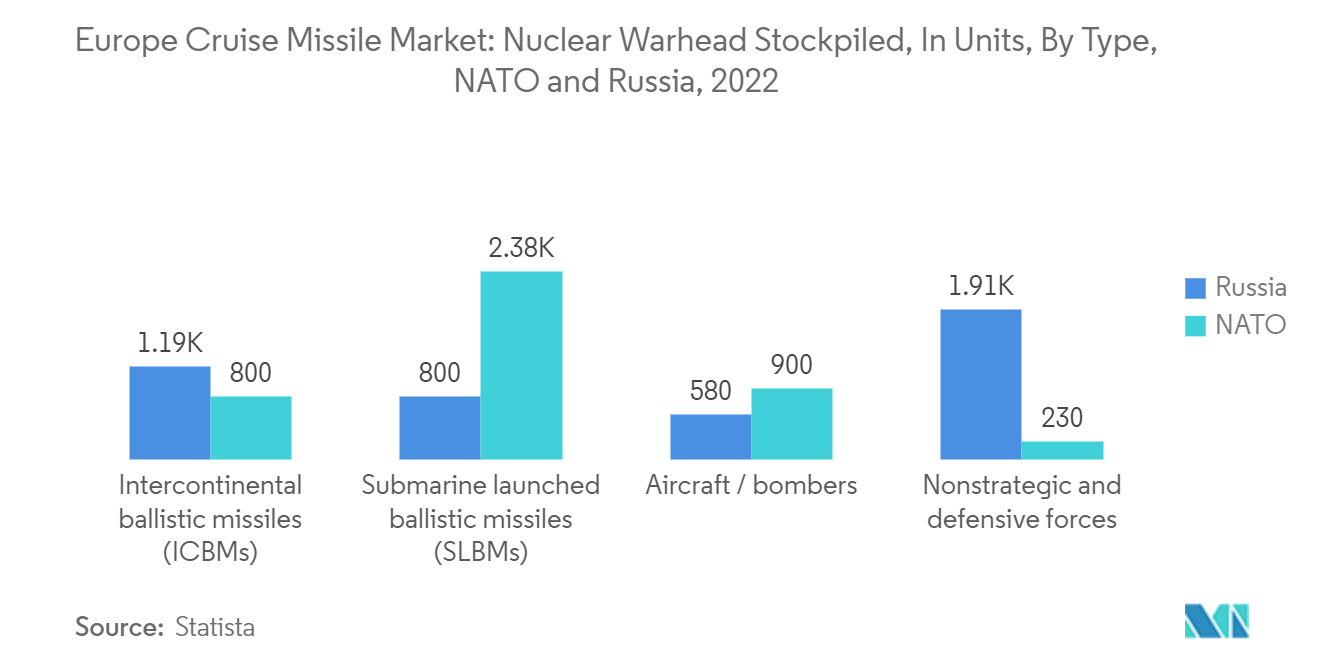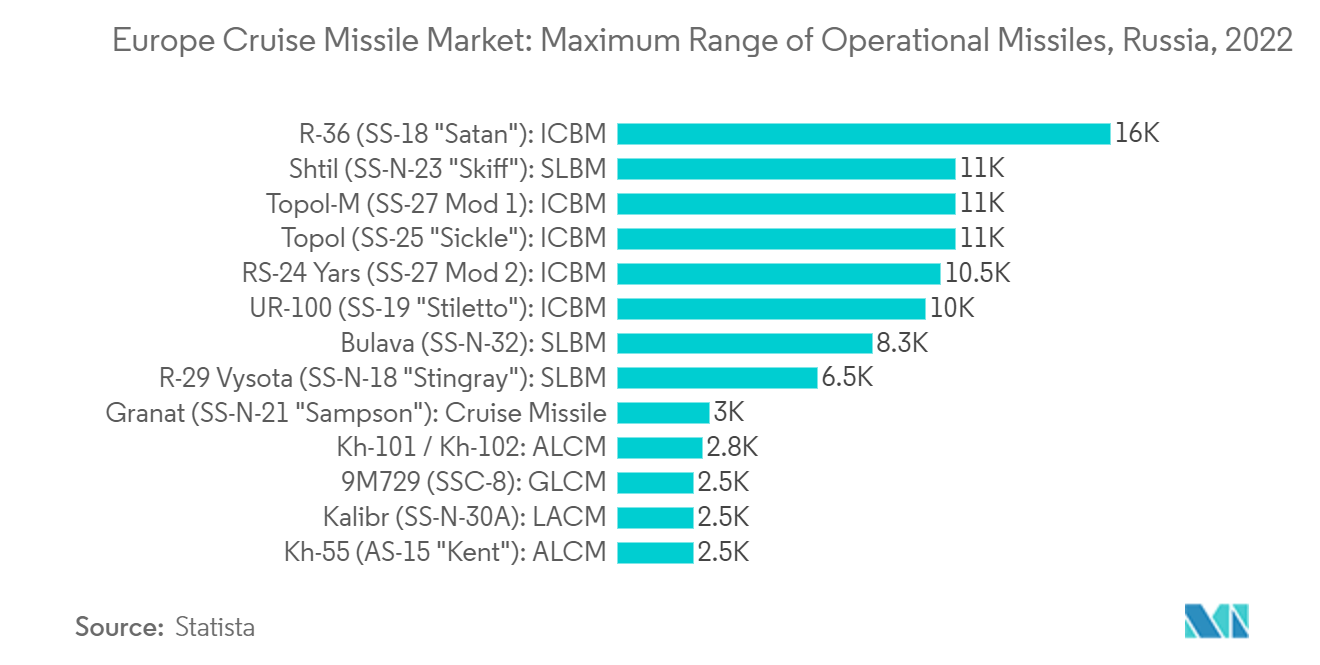Market Trends of Europe Cruise Missile Industry
The Sea Segment to Dominate Market Share During the Forecast Period
The rise in naval spending by countries such as France, the UK, Germany, etc. is propelling the market growth for cruise missiles launched from surface combatants and submarines. Countries in Europe have been investing a significant amount in indigenous development of naval platforms or procurements from foreign players. The increasing fleet of the naval forces in the region is also demanding robust air defense capabilities with guided and interceptor missiles, which is driving the growth of the segment in the region. Several navies are developing and procuring sea-launched missiles for their naval fleets. For instance, in November 2023, the Norwegian government announced the development program for the next-generation strike missile, in cooperation with Germany and Kongsberg Defence & Aerospace as the lead industrial partner. Kongsberg has previously developed the Naval Strike Missile (NSM) and will play the lead role in developing the new naval strike missile. The new missile will be known as SuperSonic Strike Missile (3SM) Tyrfing and is scheduled to be ready in 2035.

Russia to Dominate the Market During the Forecast Period
The conflict between Russia and Ukraine has served as a severe demonstration of the critical role played by cruise missiles. The conflict has witnessed the use of air-launched aero-ballistic missiles, large-scale deployment of direct attack munitions, and the testing of various cruise missile types. Russia's experience is likely to fuel demand for long-range conventionally armed land-attack cruise missiles, not only within Russia but also among other state and non-state actors globally. The conflict has emphasized the importance of quantity as a distinct quality, prompting potential users to consider the development of more capable and numerous land-attack cruise missiles. Russian strategies may involve increased numbers, improved stealth, greater speed, and the incorporation of lower-cost, high-volume decoys or direct attack munitions to overcome ground-based air defense. Russia may intensify efforts to develop high-supersonic or hypersonic cruise missiles. Furthermore, the conflict has accelerated the evolution of long-range precision land-attack weapons, moving from single-role to multi-role capabilities.
Despite sanctions and export controls, the continuation of Russia's extensive use of these missiles indicates the nation's sustained capacity to produce or acquire the necessary strike assets. For instance, in March 2023, Russia disclosed its plans to equip several navy vessels using Kalibr missiles. As per the plans, Lada-class submarine Kronstadt, which is under construction, will be equipped with Kalibr cruise missiles. Similarly, Steregushchiy corvette will also be equipped with a new Kalibr-NK missile system during modernization work at the Kronstadt Marine Plant. Such developments are anticipated to provide tremendous boost to the demand for cruise missiles in Russia during the forecast period.


